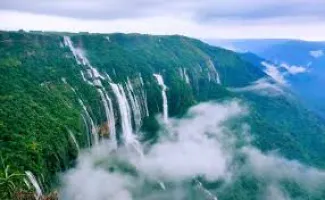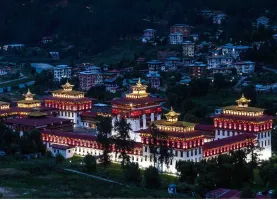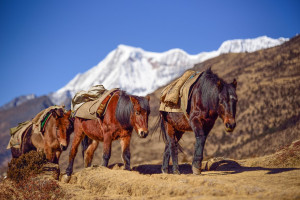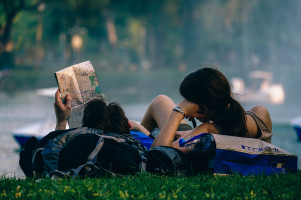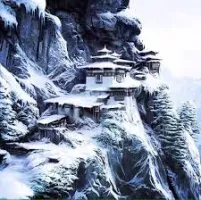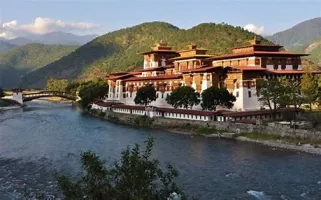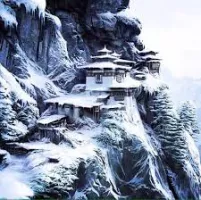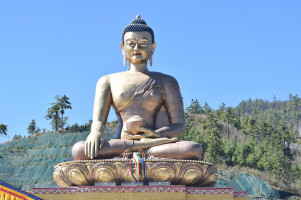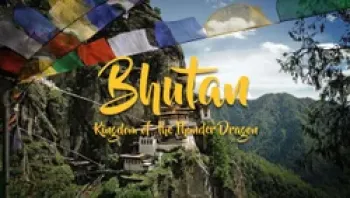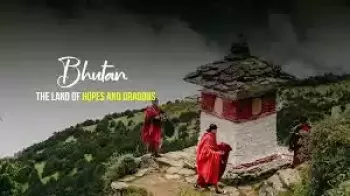About Package
Book you lucrative tour package of Paro, Punakha, Thimphu for 6 Nights, 7 Days offered by Flying Beat Tours and Travels (Bhutan- DMC) at 46,200 /Per Person . Find detailed day wise itinerary of Paro, Punakha, Thimphu tour package below which will be further customized once you enquire with us and share you trip details.
Enquire for an exciting Paro, Punakha, Thimphu sightseeing tour which will cover some of the most exciting places to visit near and at Paro, Punakha, Thimphu.
If you have any query regarding booking of your Paro, Punakha, Thimphu tour package then please call us at our 24x7 helpline number present at our profile page - Flying Beat Tours and Travels (Bhutan- DMC) and to book your tour to Paro, Punakha, Thimphu please send your trip details in our tour package booking form.
To enjoy your Paro, Punakha, Thimphu trip don't forget to get the following activites added in your Paro, Punakha, Thimphu itinerary
Package Summary
To enjoy you Paro, Punakha, Thimphu trip don't forget to get the following activites added in your Paro, Punakha, Thimphu
Detailed Day Wise Itinerary
- Day 1Info Day 1 DetailsArrive Paro-Thimphu
welcome to Bhutan. Our local representative will greet you at the only international airport in Bhutan that is located in Paro(2262m), Western Bhutan. Later we will head to Thimphu (50km, about 1.5h) via the sightseeing to Tamchog Lhakhang Iron Bridge, Buddha Dordenma Statue, National Memorial Chorten, or Bhutan Post Office Headquarters if time permit. Then check in at your sweet hotel in the capital city for a good rest while getting used to the time difference.
Tamchog Lhakhang (Tachog Lhakhang, Tamchog Lhakhang Iron Bridge) is located by the Paro river on the way to Thimphu from Paro. To get to the temple we must walk across a unique iron chain bridge with colorful fluttering prayer flags. Both the Lhakhang and the iron bridge are built by the saint Thangthong Gyalpo (1385-1464, Tibetan polymath). As the "King of the Empty Plain", Thangthong Gyalpo is now commonly known as the "Iron Bridge Maker". Enjoy his pioneering old-aged buildings left till today.
Buddha Dordenma Statue (Kuenselphodrang, Buddha Point) is a landmark of Thimphu city and you can have a great view of the Thimphu Valley there. With 51.5m in height, built of bronze and gilded in gold, the statue is famed as the largest sitting Shakyamuni statue in the world and there are 125,000 smaller Buddha statues placed within it. The statue was finished in 2015(built for 9years) to fulfill an ancient prophecy to emanate an aura of happiness and peace all over the world.
National Memorial Chorten is the most visited landmark of Thimphu which was built in 1974 in memory of the Third King, His Majesty Jigme Dorji Wangchuk(the Father of Modern Bhutan) by his mother. Due to the idea of Jigme Dorji, this stupa is dedicated to world peace and prosperity. It is a Tibetan-style chorten with amazing paintings and brilliant sculptures, you can see the classical stupa pattern like the pyramidal pillar crowned by a crescent moon and sun. It is also a good place to meet local Bhutanese people circumambulating the Chorten throughout the day in a clockwise direction for praying.
Later during late afternoon we will visit Tashichhodzong view.
Halt at Thimphu Hotel.
End of Day - Day 2Info Day 2 DetailsThimphu Local Sightseeing.
Today, we will explore Bhutan’s capital city Thimphu through Takin Sanctuary, Folk Heritage Museum, School of Arts and Crafts, Trashichho Dzong, Zilukha Nunnery, and Jungshi Handmade Paper Factory. Then have a good rest in your hotel.
Motithang Takin Preserve (Takin Sanctuary, Takin Zoo) is a wildlife reserve area for Takin (Budorcas taxicolor), the national animal of Bhutan. Drukpa Kunley (Divine Madman), the famous Tibetan saint, is said to be responsible for the creation of this unique creature called Takin which has the head of a goat and the body of a cow.
Folk Heritage Museum (Phelchey Toenkhyim) was established on July 28th, 2001 with the initiative of Her Majesty Ashi Dorji Wangmo Wangchuck (the Queen Mother of Bhutan). It is set inside a three-storied, 19th-century traditional house and provides visitors with a glimpse of the traditional Bhutanese lifestyle, artifacts from rural households, collection of typical household objects, tools, and equipment. The museum also organizes regular demonstrations of rural traditions, skills, habits, and customs as well as hosts educational programs for children.
School of Arts and Crafts (Thimphu National Institute for Zorig Chusum), established by the Government of Bhutan in 1971, is an institute that nurtures exemplary craftsmanship in Zorig Chusum (13 Arts and Crafts). In the Institute, thirteen skills are taught to students. These thirteen art forms are Traditional Painting (Lhazo), Sculpturing (Jinzo), Wood Carving (Shagzo), Calligraphy (Yigzo), Papermaking (Dezo), Bronze Casting (Lugzo), Embroidery (Tshemazo), Weaving (Thagzo), Carpentry (Parzo), Masonry (Dozo), Bamboo and cane weaving (Tshazo), Gold/Silver Smithy (Trozo), Black smithy (Garzo).
Zilukha Nunnery (Drubthob Goemba Monastery) lies on the slopes of Thimphu and is above the Golf Course. Founded in 1976 by Rikel Jadren, an emanation of Thangthong Gyalpo from Tibet, it was designed in traditional Bhutanese fashion. Houses with around to 70 nuns, it is the biggest nunnery in Bhutan. A visit to the site can give you good chance to know about their lifestyle and get a nice view of the Tashichho Dzong.
And wrap up with the day we will visit Simply Bhutan.(Known as living museum.In which we will witness a cultural program and also we will be welcomed with a ARA which is an local wine which is made out of wheat.
Later check in to the Hotel in Thimphu.
End of Day - Day 3Info Day 3 DetailsThimphu-Punakha (Dochula Pass, Punakha Dzong)
In the morning, we will drive to Punakha (74km, about 2.5h) via a visit to Dochula Pass and Punakha Dzong. After check-in at the hotel in Punakha you can have a rest.
Dochula Pass (108 memorial chortens) is a place in honor of 108 Bhutanese Soldiers, there are 108 stupas called the "Druk Wangyal Chortens" representing each soldier's life that was lost in the war of December 2003. The pass is decorated with colorful prayer flags which are symbols of veneration and the best wishes for peace and prosperity for Bhutan. If the weather is good, the Dochula Pass will become the best platform to get breathtaking views of the snow-covered Himalayas.
On arrival at Punakha we will post our lunch at Lobesa and then later afternoon we will visit Punakha Dzong which is belived to be a most beautiful Dzong among the all,beauty of it art and craft and also its located in between Pho Chhu (Male river) and Mo Chu ( Female River. After visiting Punakha Dzong we will have a short walk and visit the suspension bridge.
Later in the evening check in to the hotel and relax.
End of Day - Day 4Info Day 4 DetailsPunakha to Gangtey/Phobjikha excursion.
Well today after your breakfast we will drive towards wangdue phodrang district towards Gangtey/Phobjikha Valley(Known as U-Shaped valley) On arrival we will quickly visit Gangtey monastery and then we will proceed for a short gangtey trail. We will be doing a short train with a walk from the beautiful valley.We will post our lunch after a trail and then during afternoon we will visit Black necked crane centre.
Later after completing the above we will drive back to Punakha.
Halt at Punakha.
End of Day - Day 5Info Day 5 DetailsPunakha to Paro.
After your breakfast at Hotel we will drive back to paro via Dochula Pass.The drive might take of 3 hours to arrive at paro.En-route we will take a short stop at the shaba river for relaxation.
On arriving at Paro we will check in to the hotel and Post your Lunch.
During afternoon we will visit National Museum (TA-DZONG) and we will also visit Paro ringpong Dzong. Rinpung Dzong (Paro Dzong), the "fortress of the heap of jewels", is built in 1646 by Shabdrung Ngawang Namgyal and is located near the crystalline Paro Chu (Paro River). Through a traditional wooden cantilever bridge, we can reach it to get panoramic views of the Paro Valley. As the office of the district administration and monastic body of Bhutan, the annual religious festival Paro Tsechu also takes place in its courtyard.
During evening explore a small traditional town of Paro.Halt at Paro.
End of Day - Day 6Info Day 6 DetailsParo Tiger's Nest Monastery
Day 06. Paro Tiger's Nest Monastery
Today we will drive from Paro city to the start point of the hiking route of the Tiger's Nest Monastery. It takes about 2.5 hours to reach Tiger's Nest by foot (5 hours for a round trip), and you can have a rest at the view terrace which is located at the halfway point of the hiking road. Also, you can choose to ride a horse(self-paying) from the camp base to the Taktsang Cafeteria (lunch spot).
Tiger's Nest Monastery (Taktsang Goemba, Takhtsang Lakhang, Paro Taktshang), first built in 1692, is the iconic landmark of Bhutan. As a world cultural heritage, it is sited on the side of a cliff at a height of 900m above the Paro valley. It is said that Guru Rinpoche (a Buddhist saint) rode a tigress to the current site of the monastery and meditated in a cave for 3 years 3 months and 3 days. Now it is one of the most visited tourist attractions in Bhutan and a sacred religious site for Bhutanese to pilgrimage at least once in a lifetime.
End of Day - Day 7Info Day 7 Details
Day 07. Depart Paro
Time to say goodbye to Bhutan, Our local representative will meet you at your hotel and send you to the international airport. Happiness is a place, wish you get happiness and great memories from the Bhutan trip with us. We look forward to seeing you again.
End of Day
Inclusion
- Private Cab Transfers
- Sightseeing tour
- Breakfast
- Accommodation
- Dinner
- Taxes
- Tolls
Exclusion
- Air Fare
- Lunch
- Outdoor activities
- Anything not mentioned in inclusions
Trip Information & Conditions

Flying Beat Tours and Travels (Bhutan- DMC)
Didn't get what your are looking for?
More Tour Packages from Flying Beat Tours and Travels (Bhutan- DMC)
( 314 Reviews )
( 393 Reviews )
( 126 Reviews )
( 393 Reviews )
( 126 Reviews )
( 393 Reviews )
( 37 Reviews )
( 80 Reviews )
₹ (INR) 46,200
/Per Person *Excluding applicable taxes
Help & Support
Call Us Now
+91-8069145442
Package By
/Per Person
